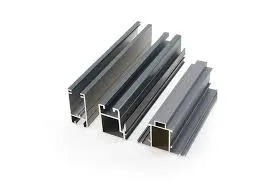wrought iron
The Art and Utility of Wrought Iron
Wrought iron, a material that has been used for centuries, is renowned for its strength, malleability, and aesthetic appeal. This unique metal is created by heating iron ore and then hammering it to remove impurities, resulting in a product that is both durable and adaptable. The term wrought comes from the Old English word wroughten, meaning to work or shape, perfectly encapsulating the essence of this material's craftsmanship.
Historically, wrought iron was the primary material for creating tools, rails, and various forms of structural support. During the Industrial Revolution, it played a pivotal role in the development of modern engineering, enabling the construction of bridges, railways, and buildings. Its ability to be shaped and worked into various forms made it the preferred choice for artisans and blacksmiths. Notably, wrought iron is less brittle than cast iron, which allows it to sustain greater stress and strain, making it ideal for tasks where durability is paramount.
The aesthetic charm of wrought iron cannot be overstated. Its natural finish and the artistic possibilities it presents have led to its widespread use in decorative items such as gates, railings, and furniture. Each piece can be meticulously crafted, incorporating intricate designs and patterns that serve both functional and decorative purposes. The interplay of light on its surface enhances the beauty of the designs, giving wrought iron a timeless elegance that blends seamlessly with various architectural styles.
wrought iron

In addition to its utility in construction and decoration, wrought iron has philosophical and cultural significance. In many cultures, the forging of iron is seen as a metaphor for strength and perseverance. The process of heating and hammering reflects the trials one endures, leading to personal development and resilience. Consequently, wrought iron has become a symbol in various arts and literature, representing not just physical strength but also steadfastness of character.
However, maintaining wrought iron can be a challenge. Being prone to rust and corrosion, it requires regular maintenance to preserve its integrity and appearance. Protective coatings or paint can be applied to enhance its durability. Moreover, it is essential for owners to be mindful of environmental conditions, as excessive moisture can accelerate corrosion.
In modern times, while wrought iron may not be as predominant in large-scale construction as it once was, its beauty and versatility have kept it relevant in contemporary design. Artists and architects continue to embrace wrought iron for its ability to add a touch of elegance and history to modern structures.
In conclusion, wrought iron stands as a testament to human ingenuity and artistry, combining practical benefits with captivating beauty. Its legacy is intertwined with the story of civilization, reflecting both the advancements in metallurgy and the timeless appeal of handcrafted artistry. Through wrought iron, we continue to celebrate not only the past but also the ongoing journey of creation and design.
-
Wrought Iron Components: Timeless Elegance and Structural StrengthNewsJul.28,2025
-
Window Hardware Essentials: Rollers, Handles, and Locking SolutionsNewsJul.28,2025
-
Small Agricultural Processing Machines: Corn Threshers, Cassava Chippers, Grain Peelers & Chaff CuttersNewsJul.28,2025
-
Sliding Rollers: Smooth, Silent, and Built to LastNewsJul.28,2025
-
Cast Iron Stoves: Timeless Heating with Modern EfficiencyNewsJul.28,2025
-
Cast Iron Pipe and Fitting: Durable, Fire-Resistant Solutions for Plumbing and DrainageNewsJul.28,2025
-
 Wrought Iron Components: Timeless Elegance and Structural StrengthJul-28-2025Wrought Iron Components: Timeless Elegance and Structural Strength
Wrought Iron Components: Timeless Elegance and Structural StrengthJul-28-2025Wrought Iron Components: Timeless Elegance and Structural Strength -
 Window Hardware Essentials: Rollers, Handles, and Locking SolutionsJul-28-2025Window Hardware Essentials: Rollers, Handles, and Locking Solutions
Window Hardware Essentials: Rollers, Handles, and Locking SolutionsJul-28-2025Window Hardware Essentials: Rollers, Handles, and Locking Solutions -
 Small Agricultural Processing Machines: Corn Threshers, Cassava Chippers, Grain Peelers & Chaff CuttersJul-28-2025Small Agricultural Processing Machines: Corn Threshers, Cassava Chippers, Grain Peelers & Chaff Cutters
Small Agricultural Processing Machines: Corn Threshers, Cassava Chippers, Grain Peelers & Chaff CuttersJul-28-2025Small Agricultural Processing Machines: Corn Threshers, Cassava Chippers, Grain Peelers & Chaff Cutters












